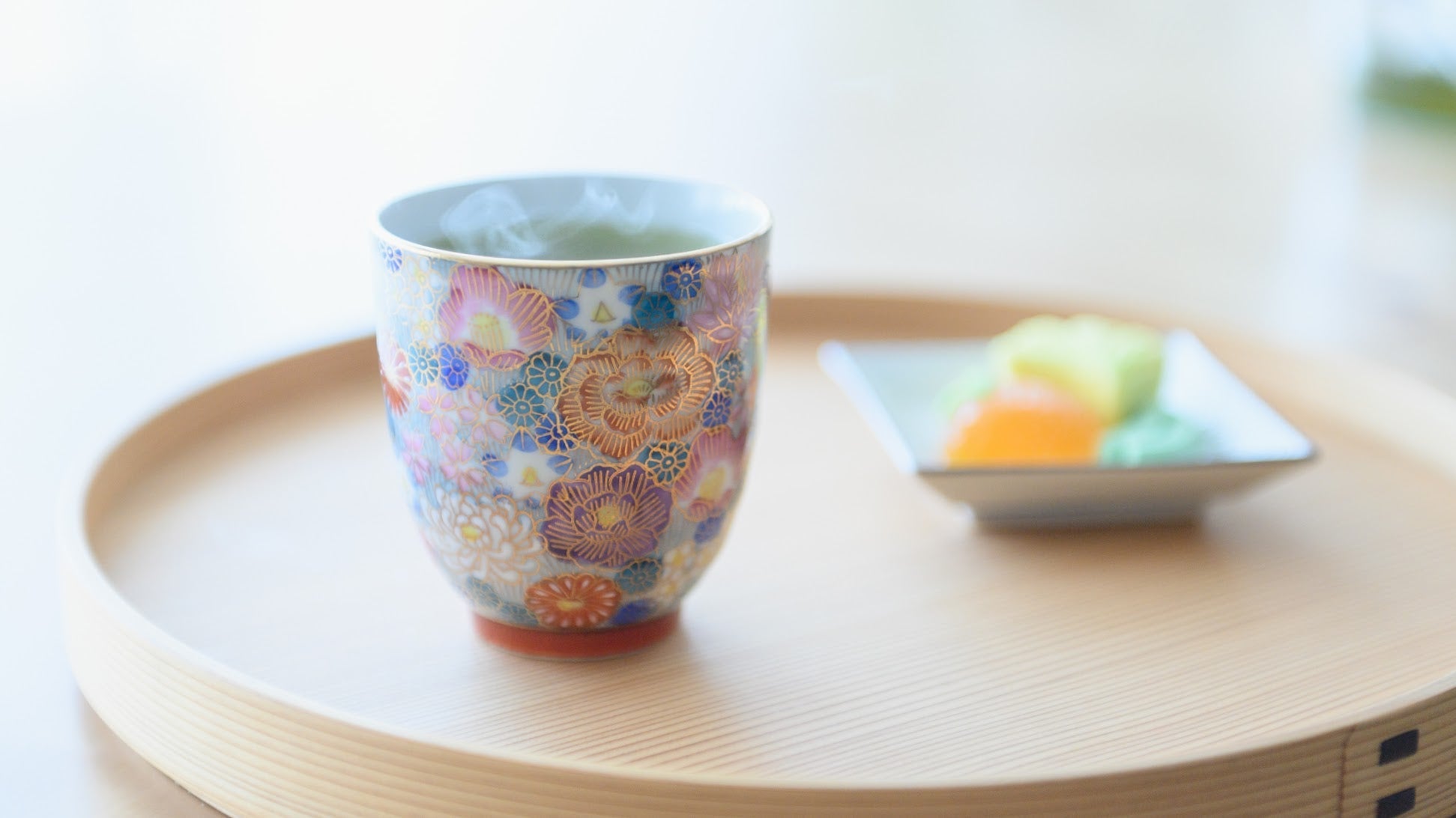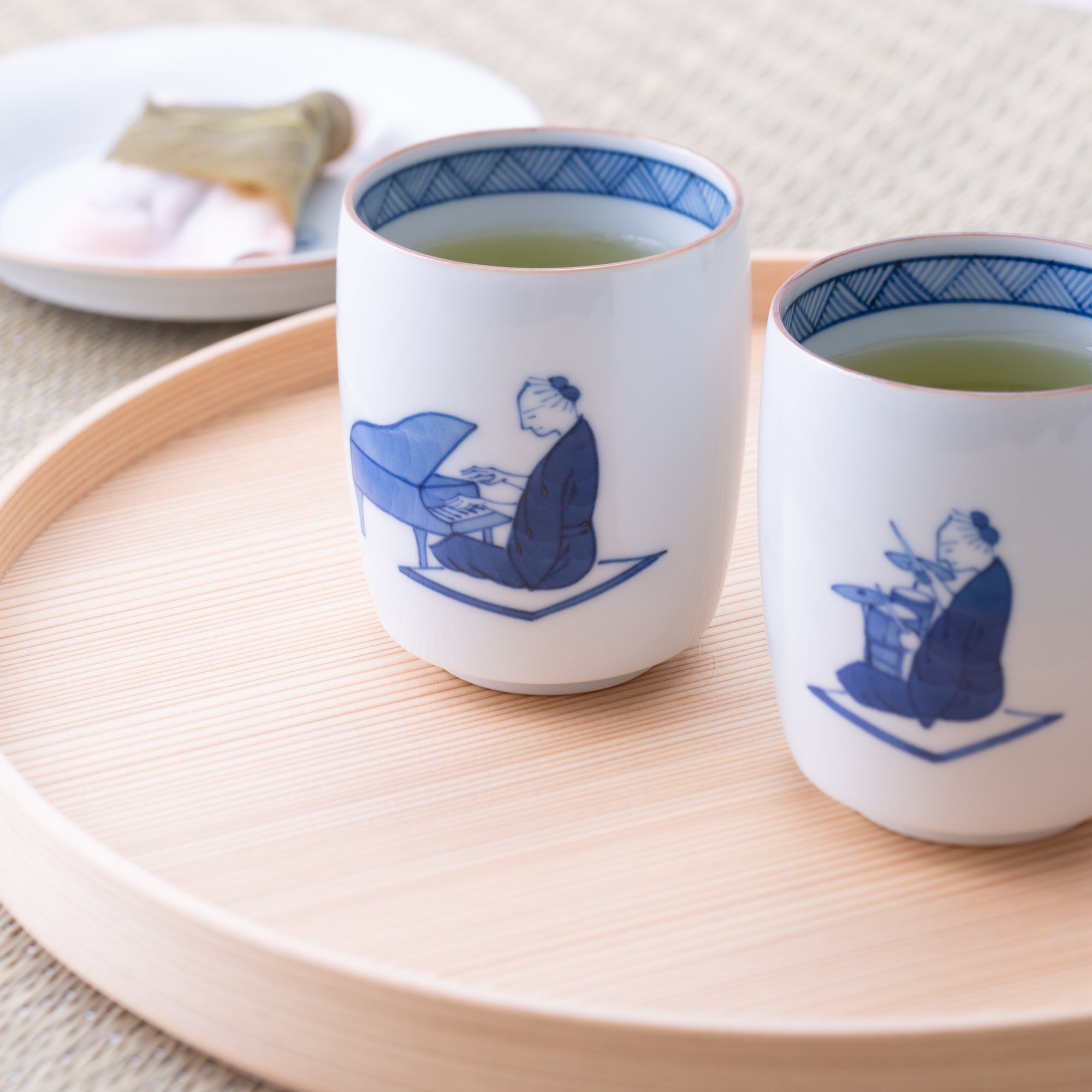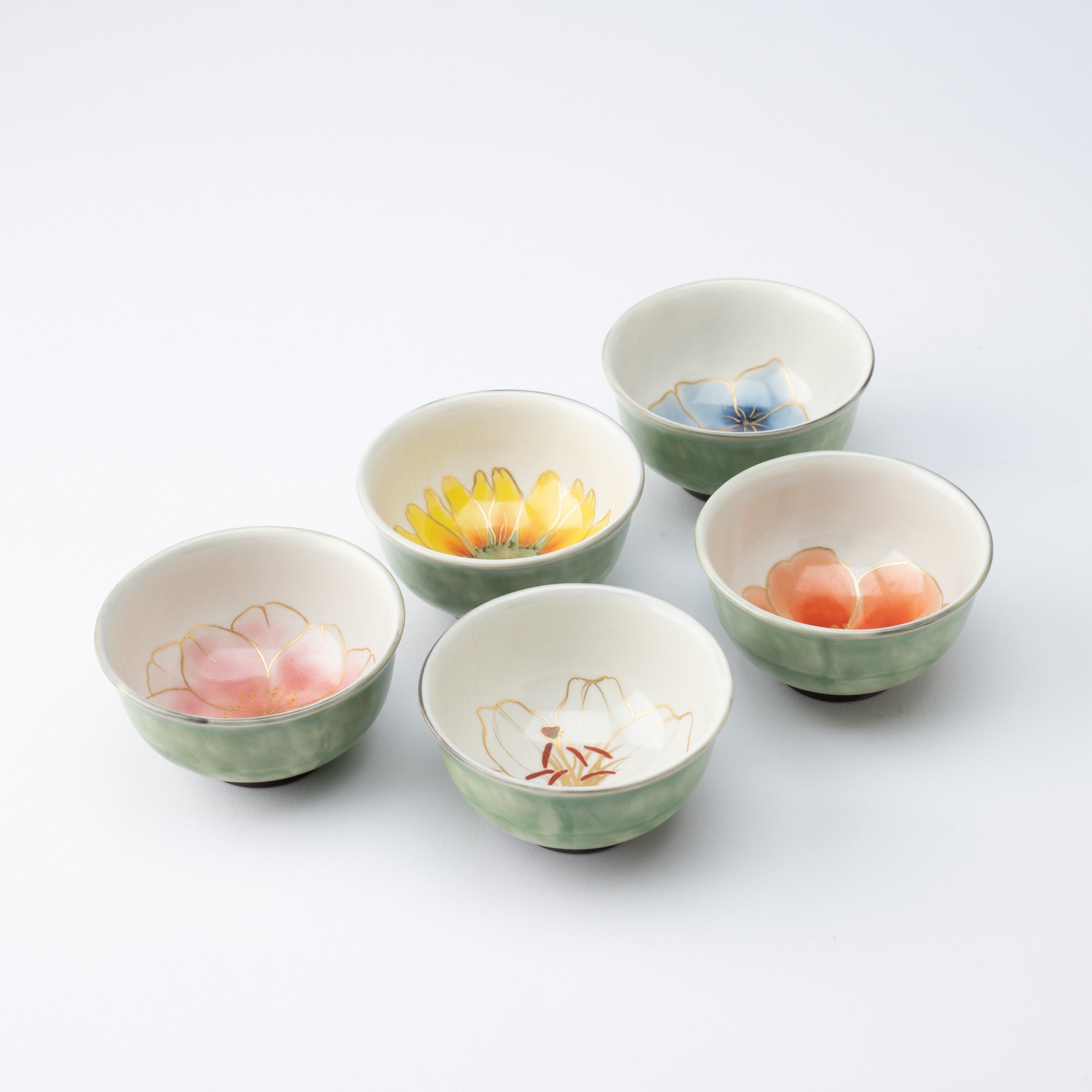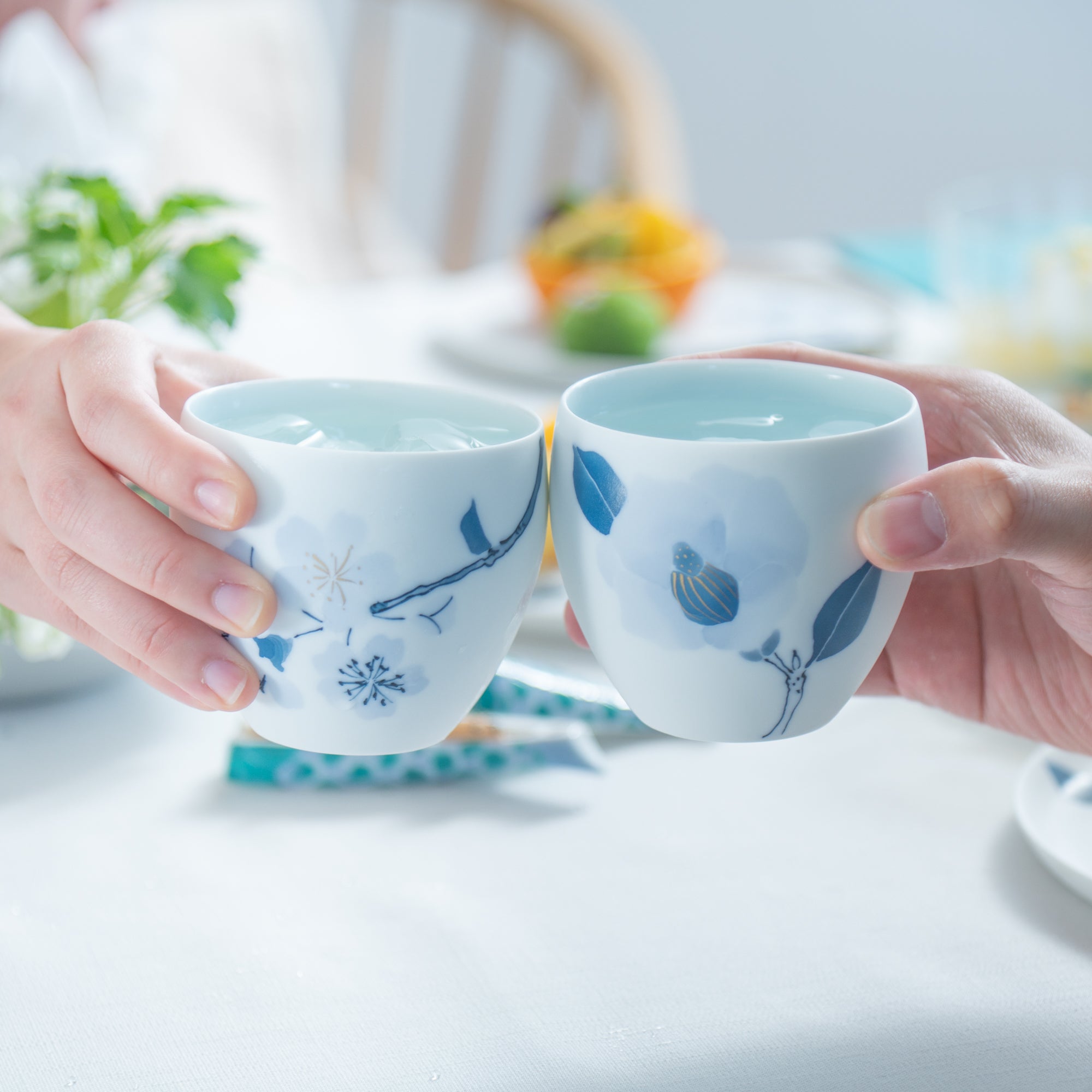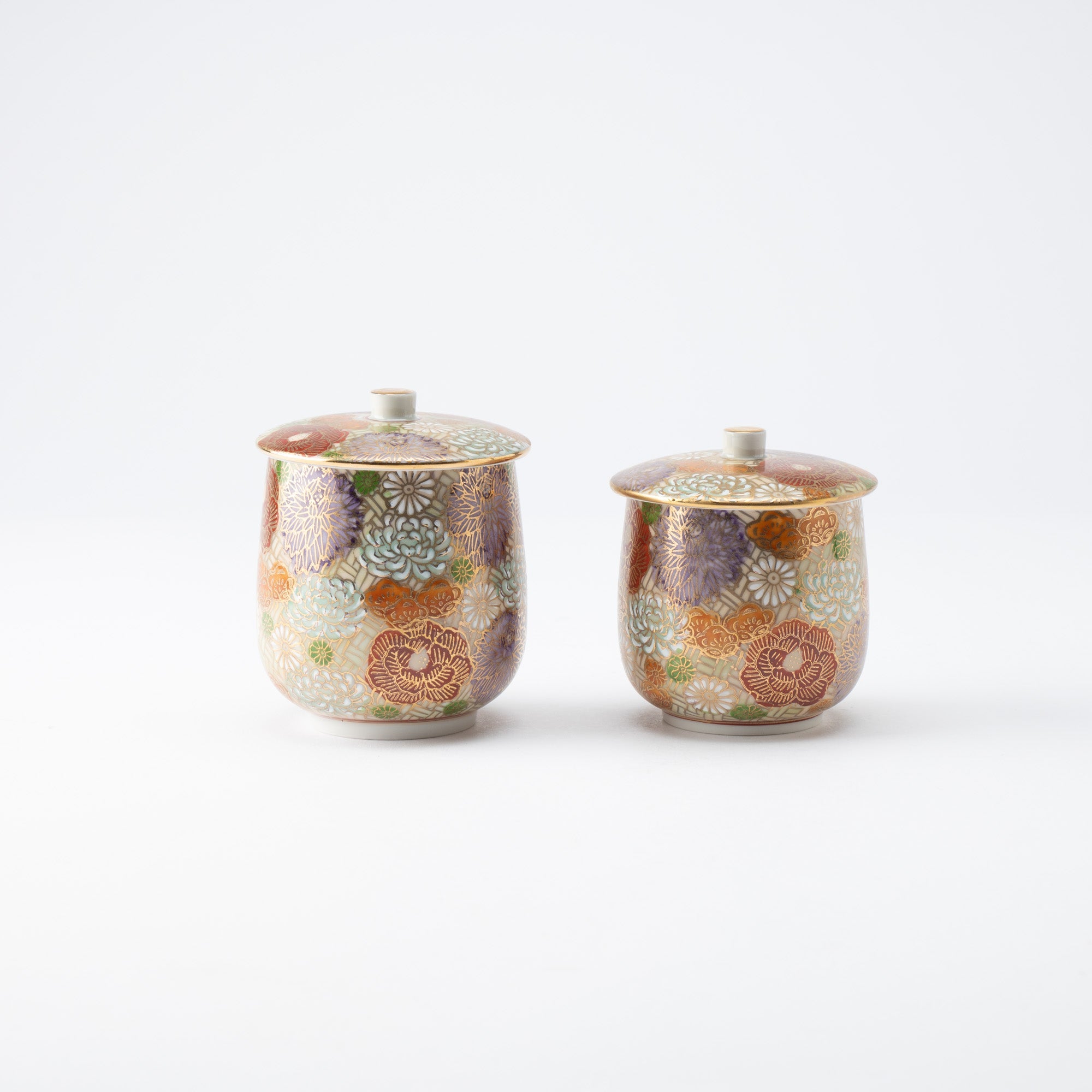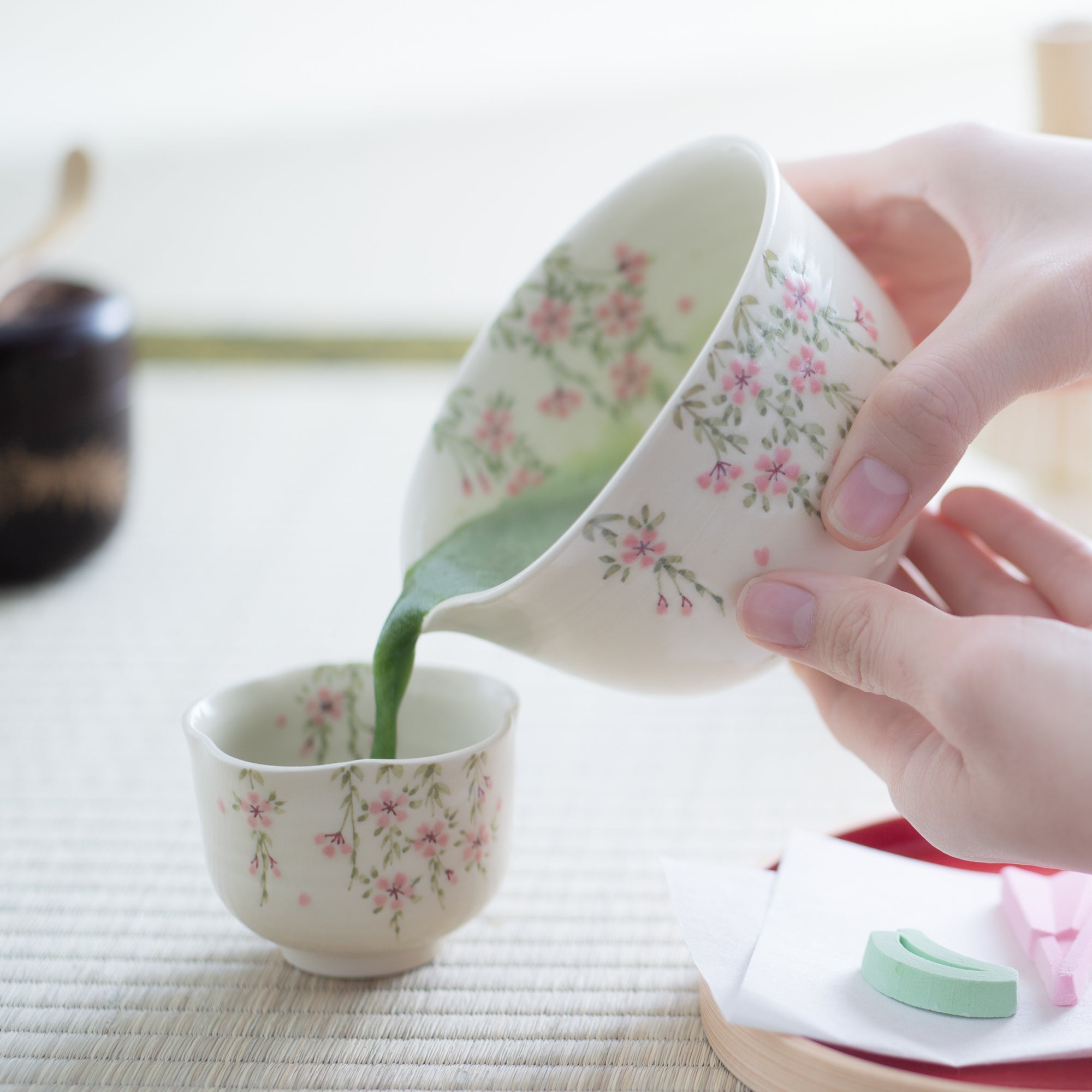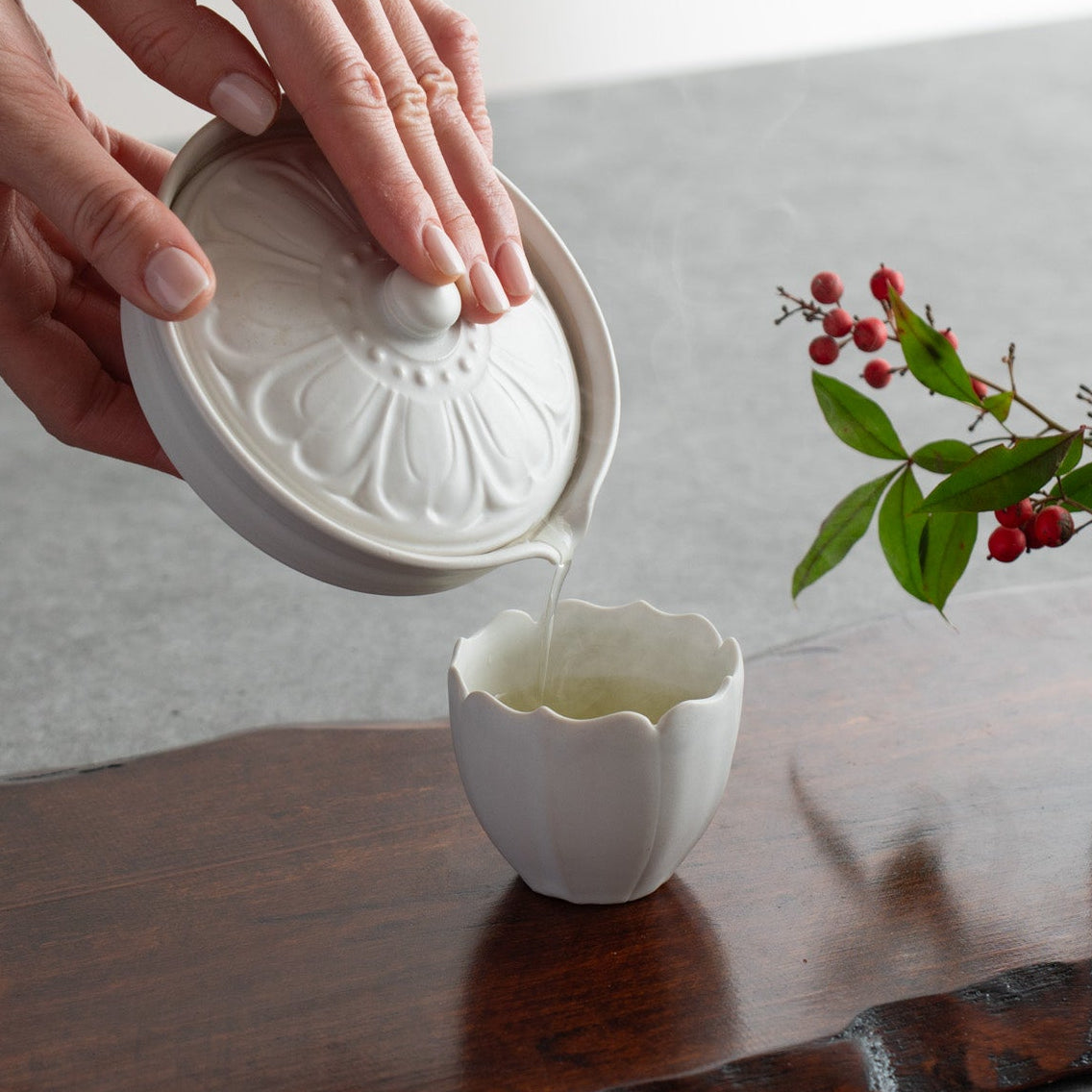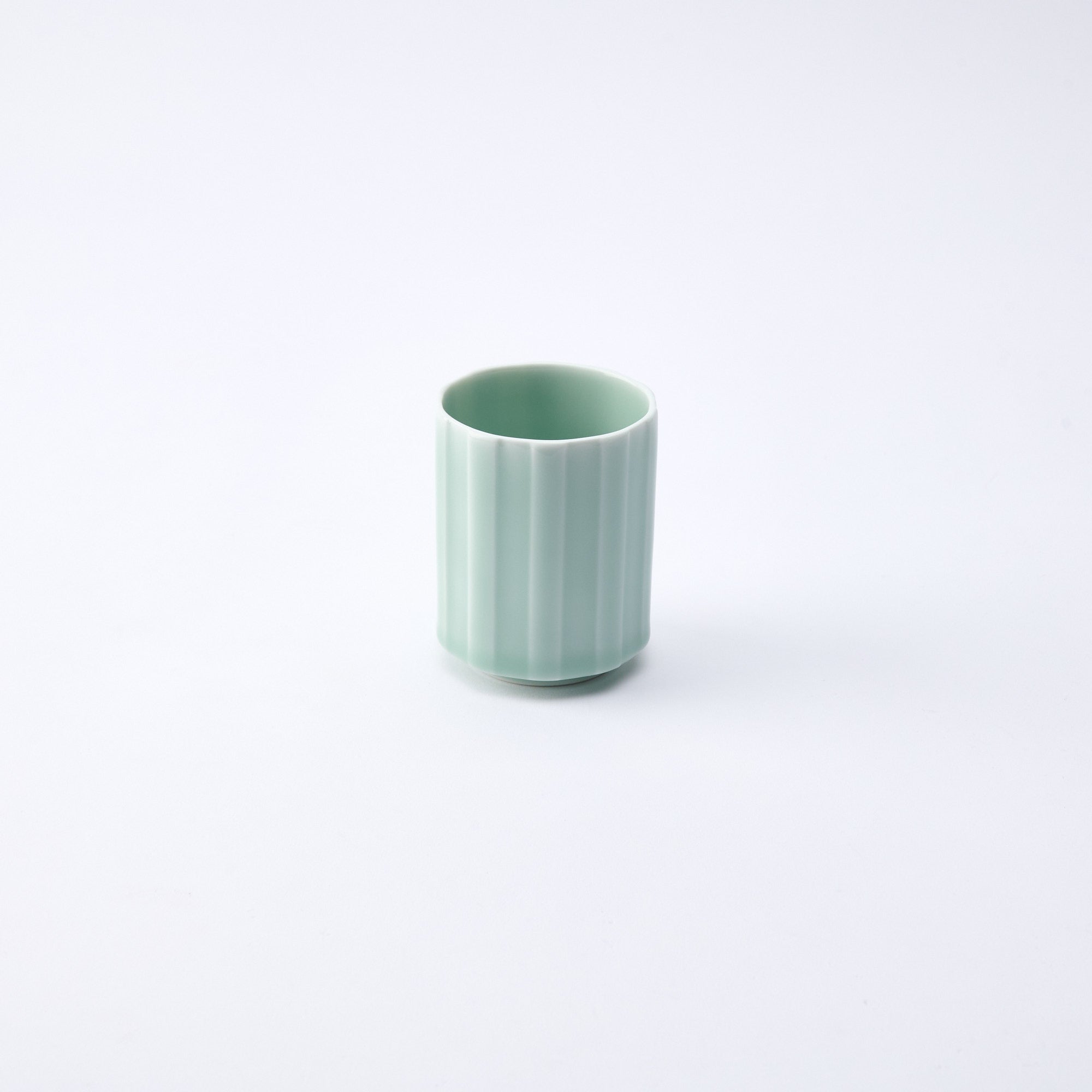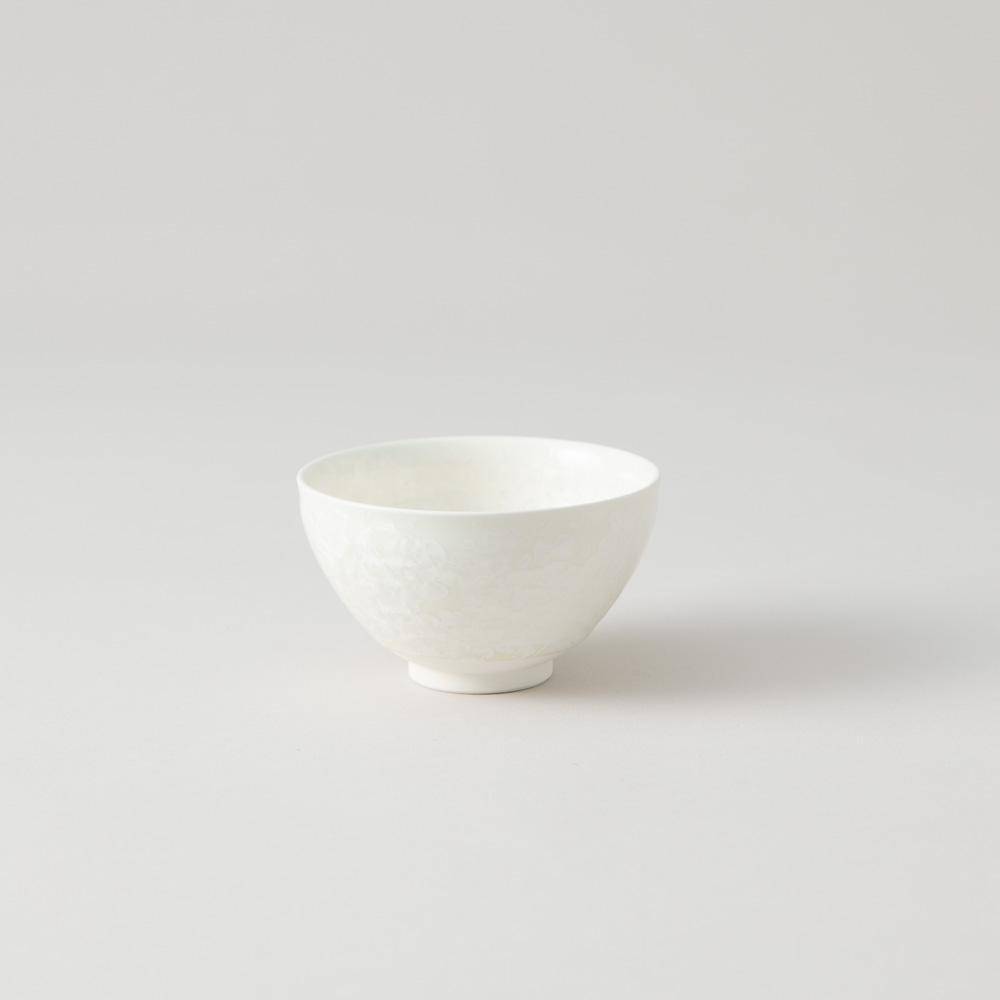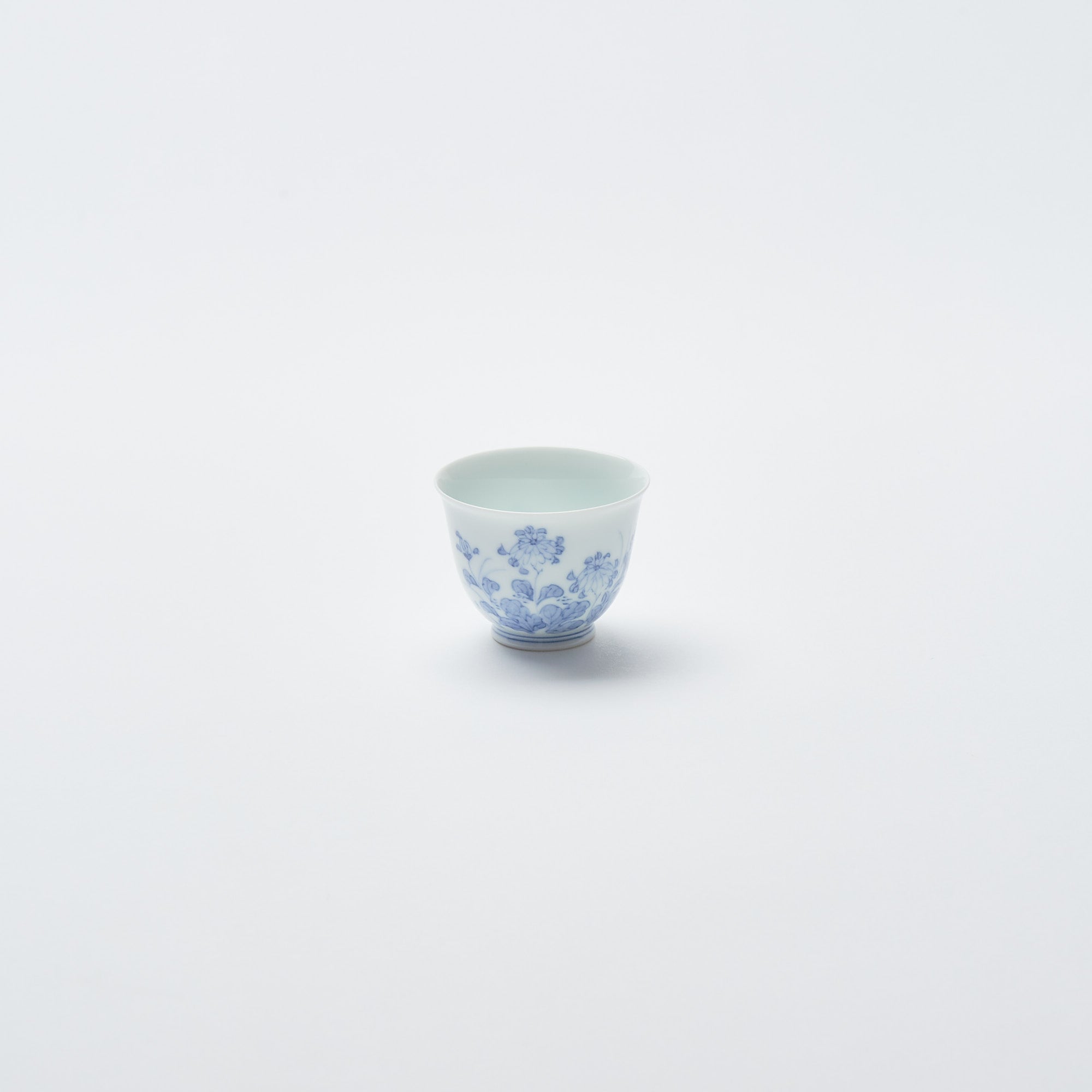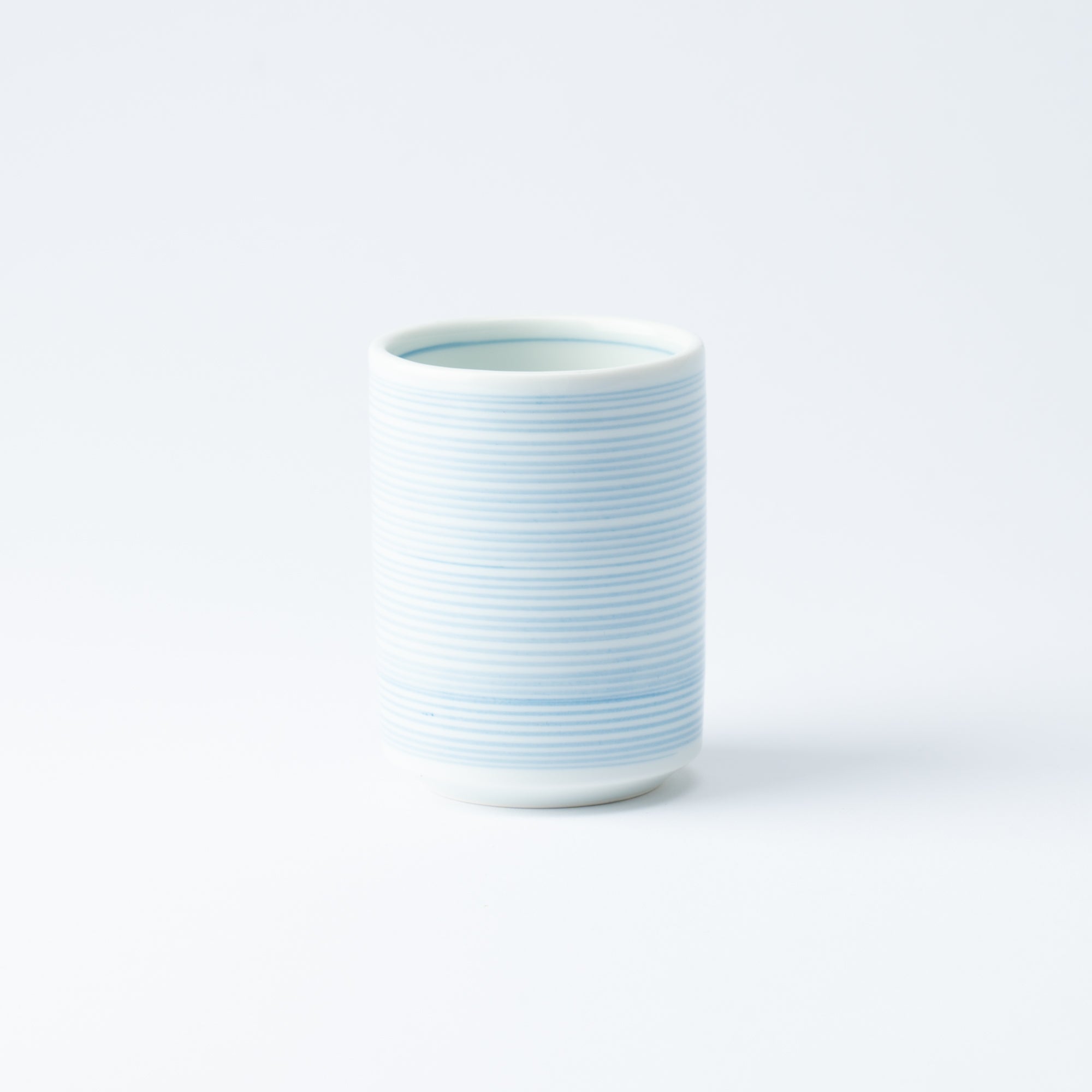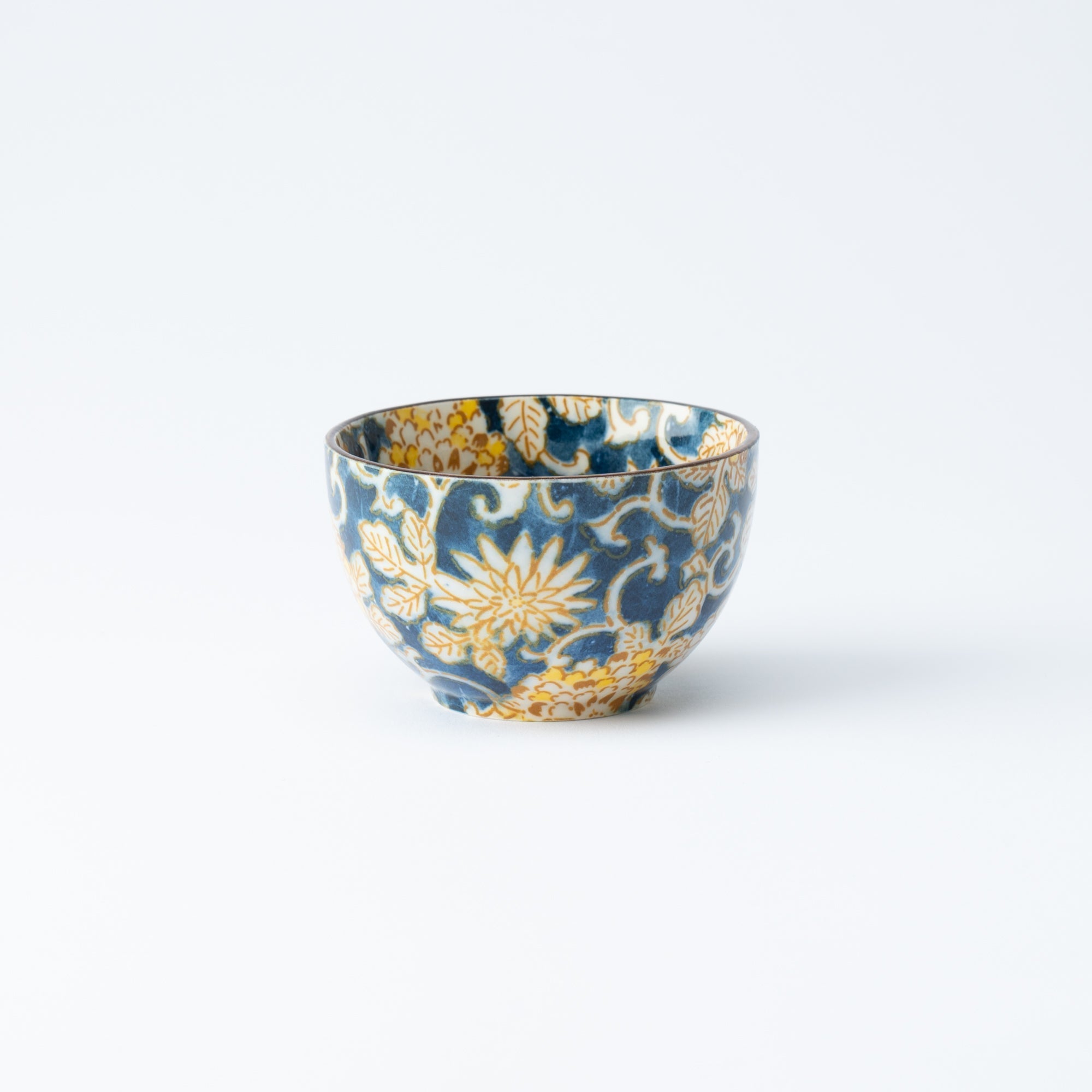
Japanese Teacups
We have carefully curated a collection of Japanese teacups from across Japan to enhance your peaceful tea time. These teacups are not only visually stunning but also practical, making them perfect for everyday use.
Yunomi is a vertical, cylindrical teacup. Due to its large capacity, the area where the tea touches the air is small, and the tea does not get cold easily. It is also suitable when you want to drink a large amount of bancha or hojicha. In sushi restaurants, tea is traditionally served in a yunomi.

Kumi-dashi has a wide frontage and is shallow. Basically, it is used for serving Japanese tea to guests. It is commonly used to brew Japanese teas such as high-quality sencha and gyokuro, as well as kelp tea, and sakura tea. The wide frontage also allows you to enjoy the color of the tea.

Soba-choko is originally used to hold the dipping sauce when eating soba, but it can also used for drinking tea and sake. It is about halfway between yunomi and kumi-dashi in size, and is suitable for casual tea drinking with good friends or family.

Related posts
Filters





